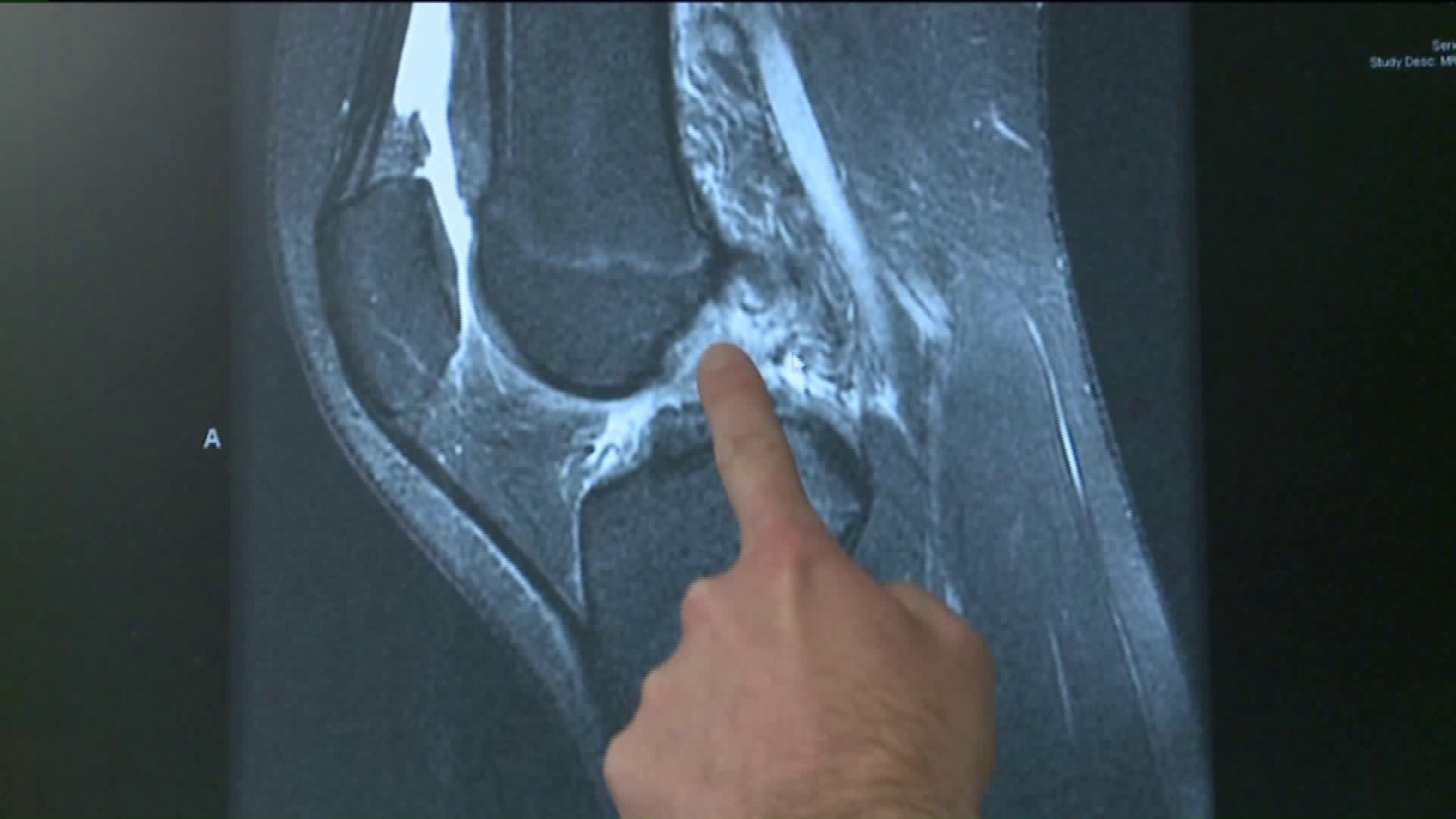WILKES-BARRE -- An ACL tear is one of those injuries that stop you in your tracks. It's very painful and requires surgery and a lot of physical therapy.
Some athletes are at particular risk of tearing their ACLs and it turns out young women, in particular, are at a higher risk.
Playing basketball is what you'll often find 16-year old Lauren Blazaskie doing. Number 20 is a junior at Hanover Area High School.
She recalls a game last year when she walked on the court but was rolled off in a wheelchair.
"I was running down the court and I was trying to stop the girl and I was trying to cut and go around to stop her. My leg planted but my body turned and everything twisted."
Lauren wasn't sure, but she suspected she tore her ACL.
"Like, I felt the whole thing pop."
An MRI later confirmed it and she ended up in Dr. Hans Olsen's office.
Dr. Olsen is an orthopedic surgeon at Geisinger South Wilkes-Barre.
"I actually tore mine in 1993. Yes, it hurts!" he said.
Dr. Olsen explains ACL stands for anterior cruciate ligament. It joins the upper leg bone with the lower leg bone and keeps the knee stable.
Athletes tear it more often than the general population, especially those involved in "start-stop" sports that require them to change direction quickly.
"It's the forces that are applied to the ligaments. You'll see the athletes are running down the field and they'll do a cut or pivot, and it's the large amount of torque and force we're putting through our knees that tears the ligament," Dr. Olsen explained.
Dr. Olsen says women are anywhere from five to ten times more likely to tear their ACL than men.
His take is that women tend to be a bit more knock-kneed. Their knees turn slightly inward, which can put more stress on the knee on landing. And he tells us women's hamstrings are typically not as strong as men's, making them a bit more stiff and straight legged, again putting more force on the knee.
Proper training, he notes, can reduce that ACL tear risk.
"There is a way to reduce -- not eliminate, but reduce -- injury risk in females, which I think is the big take-home message."
Lauren had surgery one month after her injury, and after recovery, put in months of physical therapy.
"It was a little scary in the beginning, I'll admit, but after, I felt great," Lauren said.
She's now working on strengthening both legs and is back to playing the sport she loves.
"I don't really have pain or anything anymore."
Recovery from an ACL repair surgery is usually a minimum of six months, and many patients are back at full speed at nine to 12 months.

